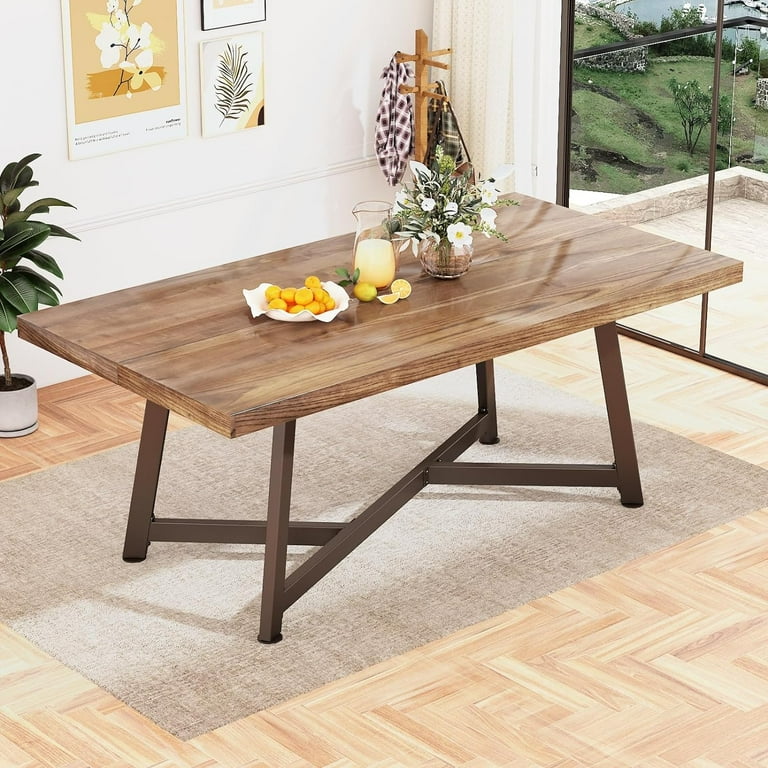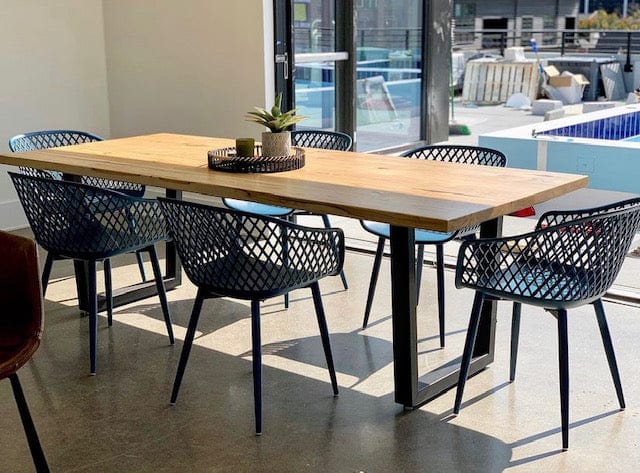How to Select the Perfect Dining-room Table Legs for Your Home Décor
Choosing the excellent dining area table legs is a nuanced process that calls for mindful consideration of different elements, including your room constraints, aesthetic preferences, and practical demands. The interaction between products, styles, and dimensions can considerably influence the atmosphere of your dining area, making it vital to approach this decision carefully. As you contemplate the myriad choices readily available, it comes to be clear that the ideal choice prolongs past simple look; it can improve your overall dining experience. What elements should you prioritize to ensure your choice enhances your home's unique character?
Assess Your Eating Room
Examining your dining space is critical for choosing the right table legs that match both aesthetics and capability. Begin by measuring the measurements of your dining location, including ceiling elevation, flooring space, and closeness to various other furniture. This info will help determine the ideal dimension and elevation of your eating table, which directly influences the selection of table legs.
Next, consider the style and layout of your eating room. As an example, an open-concept style may benefit from table legs that supply visual agility, such as slim metal or acrylic options. Conversely, an extra conventional setup might call for strong wooden legs that give a sense of durability.
Evaluate the existing shade combination and products in your dining area. Harmonizing the table legs with these elements creates a natural look that enhances the total decoration. In addition, think of the functionality called for in your room. For instance, if you frequently host huge celebrations, take into consideration legs that give extra assistance and security.
Eventually, a detailed assessment of your eating space will guide you in making an informed decision, making certain that your table legs not just improve the visual appeal yet also offer useful objectives.
Consider Your Design Preferences
When picking eating room table legs, it is vital to assess your personal design choices, as they considerably influence the general aesthetic of your dining room. Your choice of table legs can either enhance or comparison with existing décor, making it essential to straighten them with your recommended interior decoration motif.
If your home leans towards a contemporary aesthetic, think about streamlined metal or minimalist wooden legs that supply a clean, minimalist appearance. For a much more typical technique, ornate wood legs with detailed makings can include a touch of sophistication and sophistication. Industrial styles take advantage of robust, basic materials such as reclaimed wood and metal mixes, mirroring a tough charm.
Furthermore, farmhouse and rustic designs typically favor tough, chunky legs that stimulate a sense of warmth and convenience. Conversely, if your decoration is eclectic, you might choose unusual forms or a mix of materials to develop visual passion.

Evaluate Material Options
The choice of product for eating room table legs plays a crucial role in both durability and aesthetic charm. Usual materials consist of wood, steel, and composite options, each offering distinctive features that can influence the total look and durability of your table.
Timber is a classic choice, recognized for its heat and flexibility. Woods like oak and walnut offer remarkable toughness and can be ended up in different stains to match any kind of style. Softwoods like ache are extra vulnerable to scratches and damages, making them much less perfect for high-traffic locations.
Steel legs, usually crafted from steel or aluminum, show modernity and industrial beauty. They are very sturdy and resistant to use, making them appropriate for family members with children or constant gatherings (dining room table legs). Furthermore, metal can be ended up in numerous shades, improving the modification opportunities
Composite products, such as MDF or laminate, deal cost and diverse designs. While commonly less long lasting than solid timber or steel, they can still supply a trendy look and are typically very easy to preserve.
Inevitably, the product you choose ought to straighten with your way of living, visual preferences, and the degree of usage your eating table will certainly experience.
Determine Elevation and Dimension
Selecting the ideal height and dimension for your eating space table is vital for both performance and comfort. The typical height for dining tables usually varies from 28 to 30 inches, enabling adequate legroom for the majority of people when seated. Nevertheless, it is crucial to take into consideration the dimensions of your eating area and the sorts of chairs you prepare to use.

Furthermore, consider the percentages of your eating room. A larger table in a spacious location can create a grand ambiance, while a smaller sized table functions well in even more intimate setups. Eventually, the best elevation and dimension will certainly harmonize with your overall decoration and improve the dining experience for you and your visitors.
Explore Modification Possibilities

In addition, the layout of the legs can be tailored to fit different designs, such as rustic, modern, or commercial. For instance, conical legs can stimulate a mid-century contemporary feeling, while chunky, block-style legs may resonate with typical or farmhouse decor.
House owners can also explore color finishes, from natural timber spots to repaint, enabling them to match or comparison with the table top and bordering decor.
Furthermore, leg height can be gotten used to fit specific seating setups or personal preferences, improving both comfort and functionality.
Last but not least, unique decorations, such as makings or attractive brackets, can even more customize the table legs, making the dining experience not just a meal yet a statement piece in the home. By thinking about these modification alternatives, homeowners can develop a dining room table that absolutely shows their use this link individuality.
Final Thought
Selecting the excellent dining-room table legs calls for careful factor to consider of numerous elements, including the dimensions of the dining space, style preferences, product resilience, and desired height. Modification options further improve the capacity to achieve a cohesive aesthetic that complements the overall decoration. By systematically assessing these elements, link homeowners can make sure that the picked table legs not only fulfill practical needs yet also add favorably to the dining experience and ambiance of the home.
Selecting the suitable dining room table legs is a nuanced procedure that needs mindful factor to consider of different elements, including your space constraints, aesthetic preferences, and useful requirements.Examining your dining room is critical for selecting the right table legs that match both appearances and capability.When determining size, gauge the location where the table will be placed to ensure it fits easily, enabling for at the very least 36 inches of clearance around the table for simple motion. A larger table in a roomy area can create a grand atmosphere, while a smaller table functions well in even more intimate setups.Choosing the optimal dining area table legs needs careful consideration of different aspects, including the measurements of the dining area, design preferences, product toughness, and preferred height.